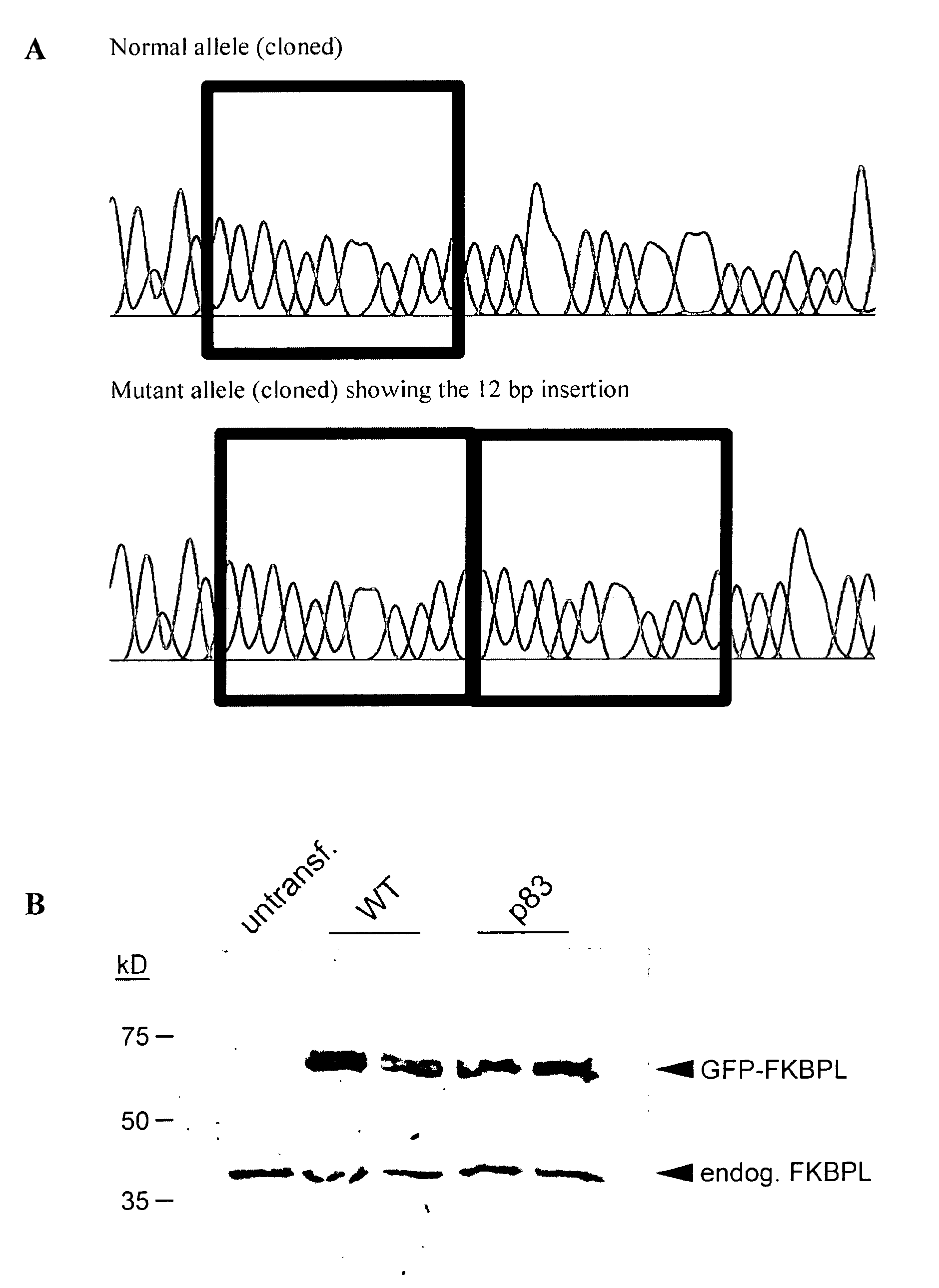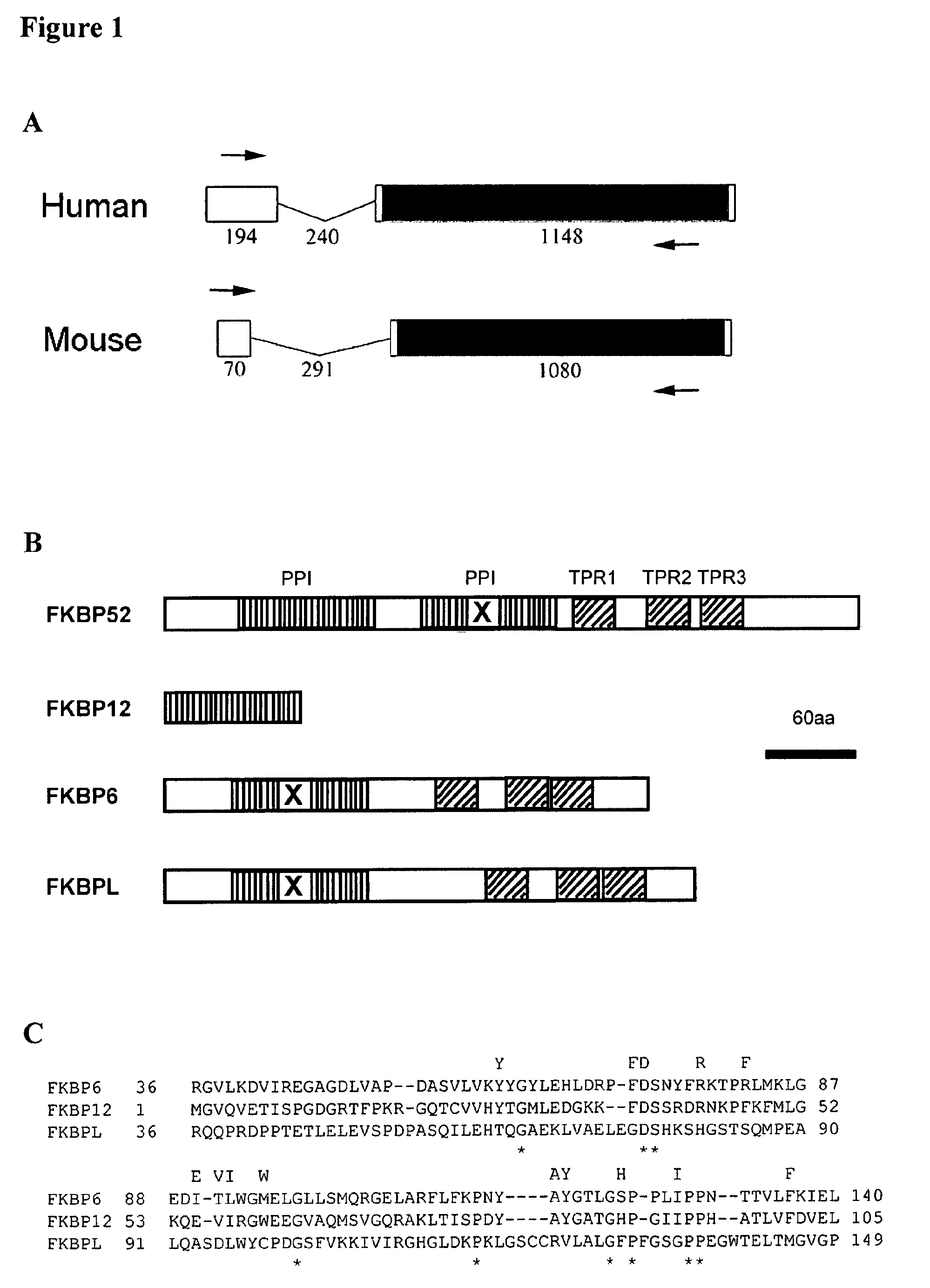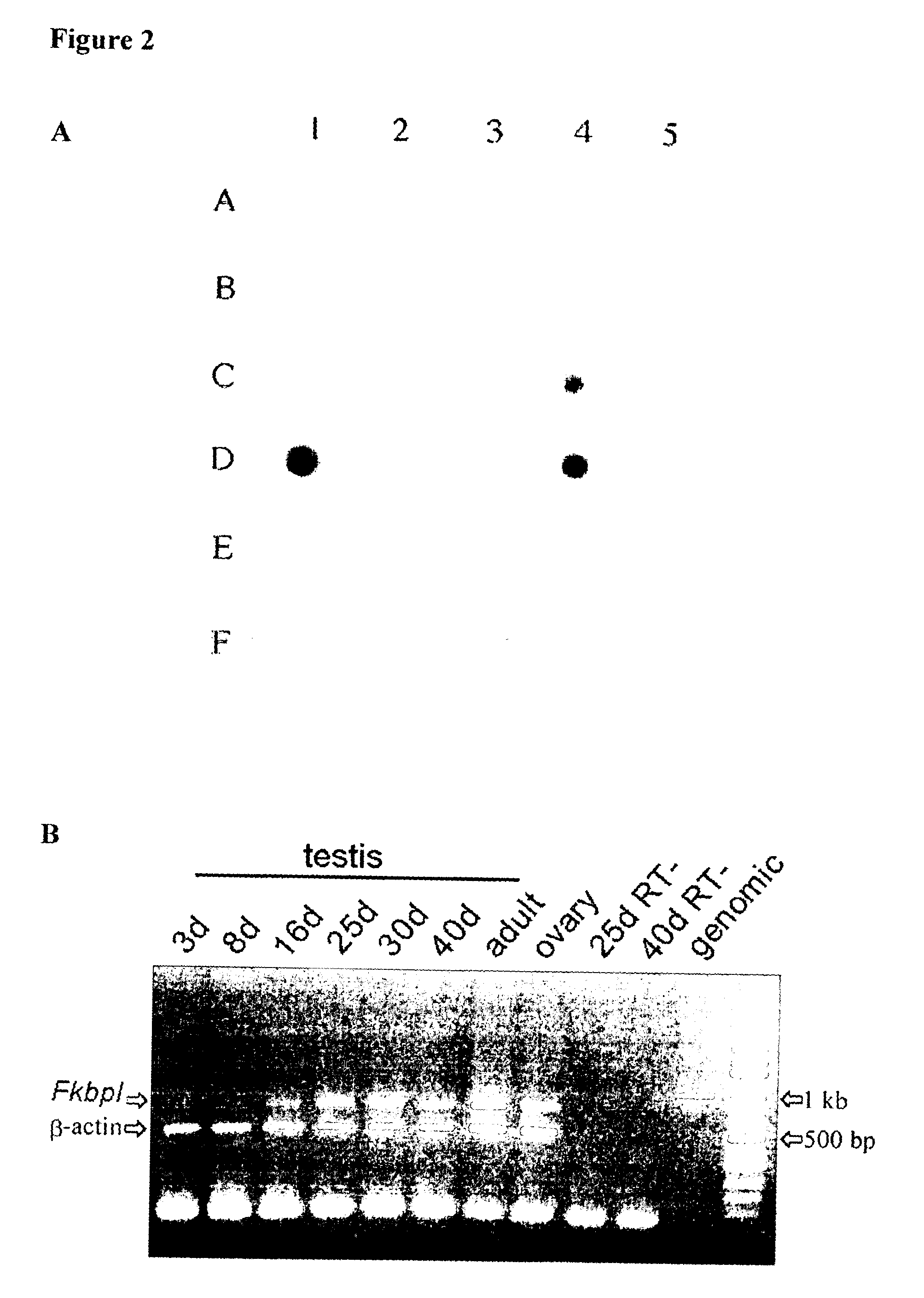Use of FKBPL gene to identify a cause of infertility
a technology of infertility and fkbpl gene, which is applied in the direction of fluid pressure measurement using electrokinetic cells, semi-permeable membranes, electrolysis components, etc., can solve the problems of male infertility, abnormalities that may be present but not detected by current methods, and insatisfactory for the coupl
- Summary
- Abstract
- Description
- Claims
- Application Information
AI Technical Summary
Benefits of technology
Problems solved by technology
Method used
Image
Examples
example 1
FKBPL Structure and Expression
[0082]The FKBPL gene consists of two exons, joined by a short intron. As seen in FIG. 1A, the open reading frame is indicated in black, and the length is indicated in base pairs.
[0083]The protein is a divergent member of the FKBP family of proteins, named for their ability to bind the immunosuppressant drug FK506. FKBPL belongs to that subfamily of FKBP which act as cochaperones for steroid receptor complexes. Referring to FIG. 1B, this subfamily has two major domains, one of which has a peptidyl-prolyl cis-trans isomerase (PPI) activity and the other containing tetratricopeptide repeats (TPR). In FIG. 1B, Peptidyl-prolyl cis-trans isomerase (PPI) domains are shown by vertical shading, and tetratricopeptide repeats (TPR) are shown by diagonal shading. FKBP12 has a PPI domain but contains no TPR. FKBP52 and FKBP51 contain a duplication of the PPI domain, but the C-terminal copy is inactive (X). FKBP6 and FKBPL have N-terminal regions with some homology t...
example 2
Fkbpl Transcription in Mouse
[0085]Referring to FIG. 2A, expression of the FKBP-like (Fkbpl) gene was examined by screening of a normalised mouse multiple tissue expression (MTE) Multiple Tissue Array mRNA blot hybridised to a radiolabelled Fkbpl cDNA, which shows high levels of transcription in testis (D1) and epididymus (D4). High levels of expression in submaxillary gland and low levels in all other tissues were confirmed by northern blotting (data not shown). RT-PCR of testis mRNA showed that transcription of the gene is turned on during sexual maturation in the male mouse at puberty (FIG. 2B). RT-PCR of total RNA isolated from testis at different days postnatally shows the appearance of transcripts as sexual maturation occurs. The primers span the intron, allowing the genomic product to be easily distinguished (right); b-actin is used as an internal control.
example 3
FKBPL Expression in Human Testis
[0086]Expression in human tissues was widespread but was again strongest in testis by tissue array blot (data not shown). An antibody has been raised to FKBPL. In order to test its specificity we carried out western blots on human cell lines carrying a GFP-tagged version of the human protein (FIG. 3B). HT29 cells were transfected with GFP-tagged FKBPL from patient 83 (p83) or a control (WT). The size of the endogenous protein is also indicated. This result clearly showed that the antibody is picking up both endogenous and transfected FKBPL, with little or no background.
[0087]We then carried out immunostaining on human testis sections to see if FKBPL is expressed here (FIG. 4). The same antibody as in FIG. 3B shows staining (brown) in the spermatogonial cells of the tubule and the interstitial cells Leydig cells, but not in the cells of the tubule wall, peritubular myoid cells or blood vessels (blue). A secondary antibody control gave no non-specific b...
PUM
| Property | Measurement | Unit |
|---|---|---|
| pH | aaaaa | aaaaa |
| pH | aaaaa | aaaaa |
| receptor affinity | aaaaa | aaaaa |
Abstract
Description
Claims
Application Information
 Login to View More
Login to View More - R&D
- Intellectual Property
- Life Sciences
- Materials
- Tech Scout
- Unparalleled Data Quality
- Higher Quality Content
- 60% Fewer Hallucinations
Browse by: Latest US Patents, China's latest patents, Technical Efficacy Thesaurus, Application Domain, Technology Topic, Popular Technical Reports.
© 2025 PatSnap. All rights reserved.Legal|Privacy policy|Modern Slavery Act Transparency Statement|Sitemap|About US| Contact US: help@patsnap.com



